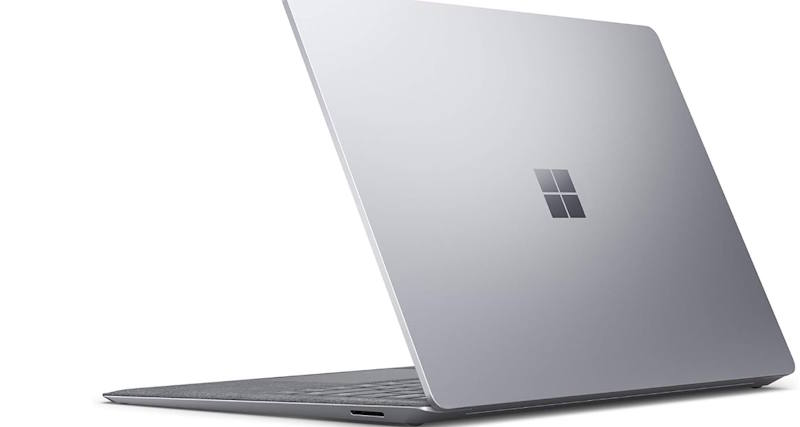In October 2019, Microsoft unveiled the Surface Laptop 3, the latest iteration of its premium ultrabook series. This launch marked a significant evolution in the Surface Laptop lineup, introducing more power, better connectivity, and an improved user experience compared to its predecessor, the Surface Laptop 2. With new size options, upgraded internals, and thoughtful refinements, Microsoft aimed to deliver a device that could cater to both professionals and casual users looking for a sleek and capable laptop.
What’s New Compared to the Surface Laptop 2?
The Surface Laptop 3 introduced several key upgrades that set it apart from its predecessor (Surface Laptop 2):
- Two Size Variants: Microsoft expanded the lineup by introducing a larger 15-inch model alongside the traditional 13.5-inch version, providing more choice for users who prefer a bigger display.
- Improved Performance: The new models featured 10th-generation Intel Core processors (for the 13.5-inch version) and, for the first time, an AMD Ryzen Surface Edition processor in the 15-inch model. This was a major step toward catering to users who needed more power for multitasking and creative work.
- USB-C Connectivity: A long-awaited addition, USB-C replaced the mini DisplayPort, making the laptop more versatile for modern peripherals and external displays.
- Faster Charging: The Surface Laptop 3 introduced fast charging, allowing users to charge up to 80% in about an hour—an essential feature for professionals on the go.
- Refined Keyboard and Trackpad: The already excellent keyboard was further refined for better key travel, and the trackpad was made 20% larger for improved usability.
- Aluminum Chassis Option: While the Alcantara fabric keyboard deck remained an option, Microsoft introduced an all-metal design, appealing to users who preferred a more traditional laptop feel.
What Users Loved About the Surface Laptop 3

The Surface Laptop 3 received widespread praise for several aspects:
- Sleek and Slim Design: Microsoft continued to prioritize portability, maintaining the thin and lightweight form factor while introducing a more premium and professional look.
- Bright and Sharp Display: The 3:2 PixelSense touchscreen remained a standout feature, delivering excellent color accuracy and sharpness for both work and media consumption.
- Windows Hello Facial Recognition: The built-in Windows Hello feature provided fast and secure login with facial recognition, a seamless and reliable experience that users appreciated.
- Great Keyboard and Trackpad Experience: The Surface Laptop series had already set a high standard for typing comfort, and the third iteration continued to deliver an exceptional experience.
- Improved Battery Life: While not industry-leading, battery life saw some improvements, with Microsoft claiming up to 11.5 hours of usage, making it a solid option for all-day productivity.
The Downsides: Where the Surface Laptop 3 Fell Short
Despite the improvements, the Surface Laptop 3 was not without its criticisms:
- No Thunderbolt 3 Support: Although Microsoft added USB-C, it lacked Thunderbolt 3, limiting the laptop’s ability to connect to high-speed external storage or multiple 4K monitors.
- Average Battery Life Under Load: While Microsoft’s claims of 11.5 hours were achievable under light usage, real-world performance—especially with the AMD variant—was notably lower, disappointing power users.
- Limited Upgradability: RAM and storage were not user-upgradable, a downside for those who wanted to extend the laptop’s lifespan.
- AMD Version Performance Variability: While the AMD Ryzen processor brought more graphics power, some users found that performance was inconsistent compared to Intel’s offerings.
Conclusion: A Refined Yet Familiar Experience
The Surface Laptop 3 was a solid step forward for Microsoft’s laptop lineup, offering meaningful improvements in performance, connectivity, and design. It maintained the premium build quality and simplicity that made the Surface Laptop series popular while introducing much-requested features like USB-C and a larger trackpad. However, certain limitations, such as the absence of Thunderbolt 3 and modest battery life under heavy workloads, left room for improvement.
For users seeking a well-built, stylish laptop with excellent display quality and a top-tier typing experience, the Surface Laptop 3 was a compelling choice. However, for power users needing more connectivity and long-lasting battery performance, other ultrabooks in the same price range offered stronger alternatives. Nonetheless, Microsoft’s refinement of the Surface Laptop formula ensured that it remained one of the most attractive Windows laptops of its time.